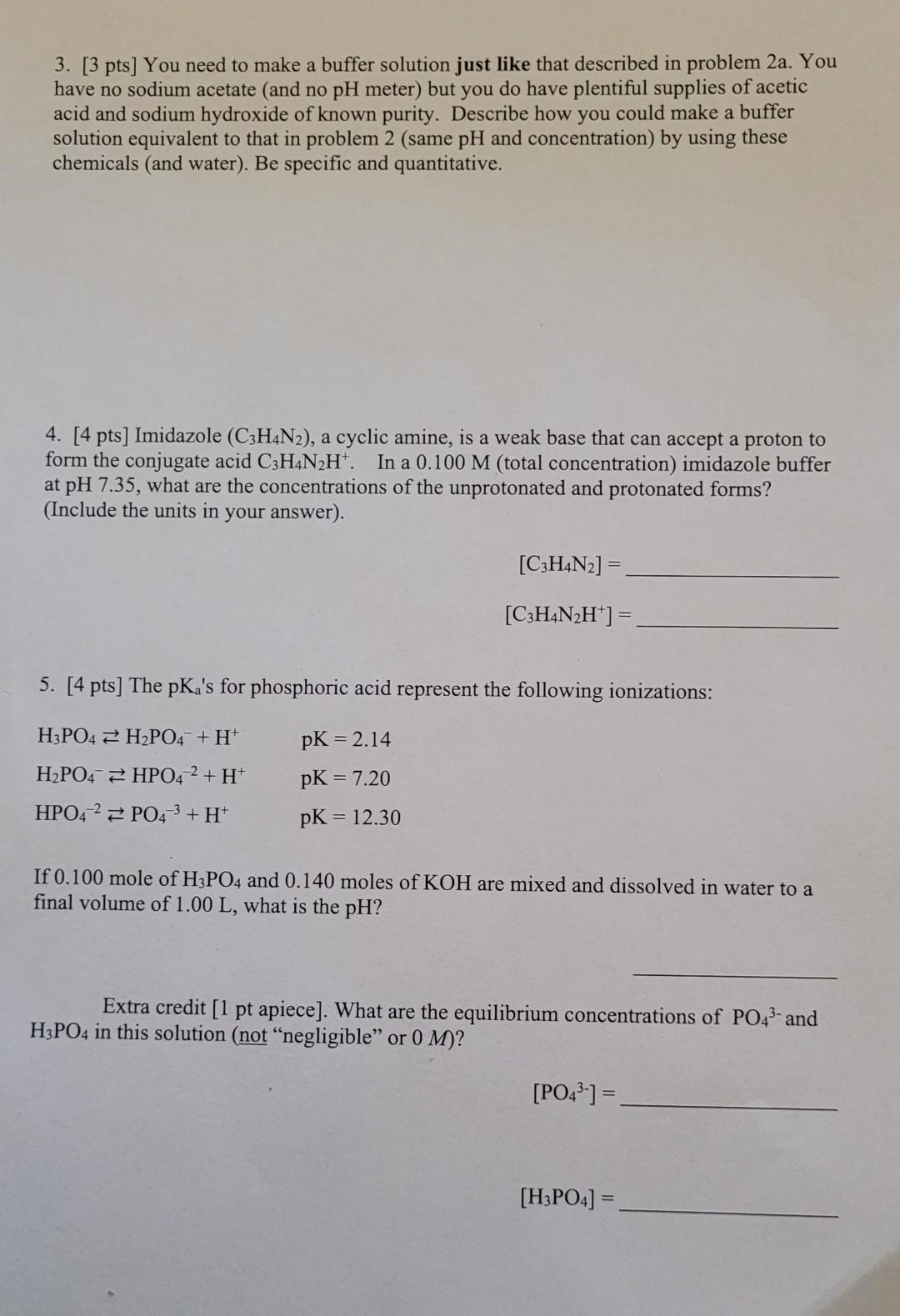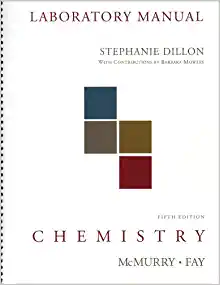Answered step by step
Verified Expert Solution
Question
1 Approved Answer
please help with all of em! 3. [3 pts] You need to make a buffer solution just like that described in problem 2a. You have


please help with all of em!
3. [3 pts] You need to make a buffer solution just like that described in problem 2a. You have no sodium acetate (and no pH meter) but you do have plentiful supplies of acetic acid and sodium hydroxide of known purity. Describe how you could make a buffer solution equivalent to that in problem 2 (same pH and concentration) by using these chemicals (and water). Be specific and quantitative. 4. [4 pts] Imidazole (C3H4N2), a cyclic amine, is a weak base that can accept a proton to form the conjugate acid C3H4N2H". In a 0.100 M (total concentration) imidazole buffer at pH 7.35, what are the concentrations of the unprotonated and protonated forms? (Include the units in your answer). [C3H4N2] = [C3H4N2H] = 5. [4 pts] The pKa's for phosphoric acid represent the following ionizations: H3PO4 H2PO4 + H+ PK = = 2.14 = H2P04 2HPO4 2 + H+ HPO4-2 Z P04-3 + H+ PK = 7.20 PK = 12.30 If 0.100 mole of H3PO4 and 0.140 moles of KOH are mixed and dissolved in water to a final volume of 1.00 L, what is the pH? Extra credit [1 pt apiece). What are the equilibrium concentrations of PO43-and H3PO4 in this solution (not "negligible" or 0 M)? [PO4) = [H3PO4) = Problem Set: Buffers Write the answers in the spaces provided. Attach additional sheets of paper showing your calculations. You may refer to your textbook or other reference materials, but should work individually. This problem set has two pages. PK PK Use the following table of pKa's. pK Acetic acid 4.76 Imidazole 7.07 Tris * 8.14 Carbonic acid 6.37 Glycine 2.35 Phosphoric acid 2.14 10.25 9.78 7.20 12.30 *short name for tris(hydroxymethyl)aminomethane (more formally, 2-amino-2-hydroxymethyl-propanediol), a widely used laboratory buffer in biochemistry. Note: it is standard practice to refer to the concentration of buffers as the sum of the concentrations of the protonated and unprotonated forms of the buffering substance. For example, in a 1 M acetic acid-acetate buffer (which might also be called a 1 Macetate buffer or a 1 Macetic acid buffer) the total concentration of CH3COOH and CH3COO is 1 M, but the individual concentration of each species depends on the pH. Similarly, in a 50 mM Tris buffer, the sum of [Tris] and [TrisH*] is 50 mM, and in a 100 mM phosphate buffer, the sum of all 4 ionization states (H3PO4 + H2PO4 + HPO42- + PO43-) is 100 mM. Include the correct units and correct number of significant figures in your answers. 1. [3 pts] Which of the substances in the table would be the best choice for preparing a buffer at pH 7.9? Explain your answer briefly (calculations not required). 2. a) [3 pts] 0.200 moles of acetic acid and 0.300 moles of sodium acetate are dissolved in 1.00 L of water. Calculate the pH of the resulting buffer. b) [3 pts) 0.020 mols of NaOH are added to the buffer described in part a. What is the new pH of the bufferStep by Step Solution
There are 3 Steps involved in it
Step: 1

Get Instant Access to Expert-Tailored Solutions
See step-by-step solutions with expert insights and AI powered tools for academic success
Step: 2

Step: 3

Ace Your Homework with AI
Get the answers you need in no time with our AI-driven, step-by-step assistance
Get Started


